The Article
COMETE SPEAKERS FROM TRIANGLE
11th September 2023
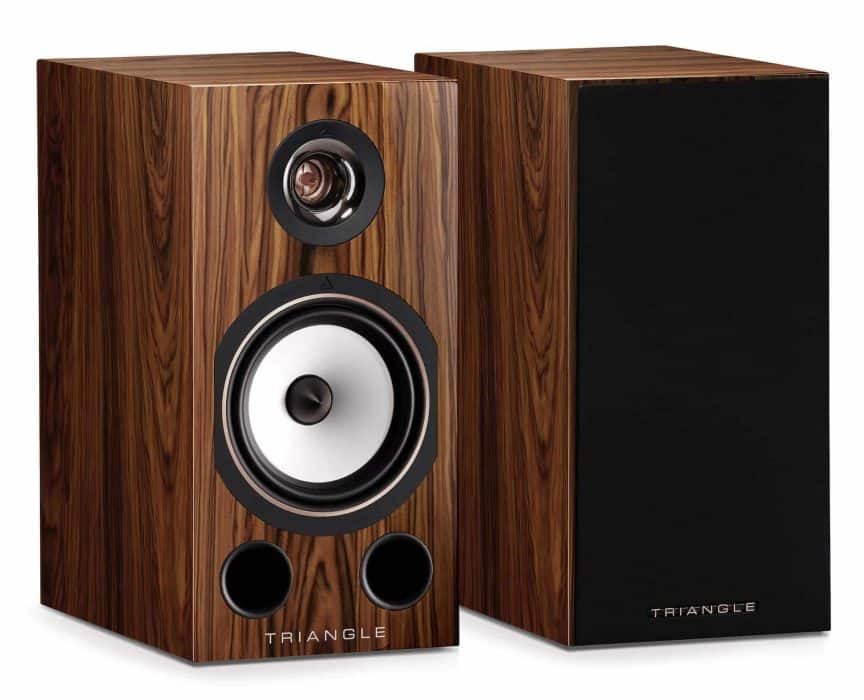
These 40th Anniversary stand-mounts look the part. Paul Rigby wonders if they sound the part
Well, 40th anniversary back in 2020. But 43rd anniversary doesn’t scan particularly well right now and then there was the viral thing so, you know…
The original Comete – because there was an original Comete – appeared back in 1994. These 8 Ohm models are basically re-written versions of the original. So you get the same two, front-mounted port and then a whole lot of enhancements.
Up top we have a 25mm horn tweeter with a phase plug that is rocket-cone sharp. That’s interesting in and of itself, I have to say because I’m now expecting a lithe and response upper frequency area here. This one is rather pretty in its rose-gold finery.
Down below, the paper-wood fibre mid-bass unit spans 165mm and fixes a large magnet at the rear. Inside is quality wiring, high-end capacitors and resistors and a crossover that lifts the cross over point.
Finishes are ‘Golden Oak and Santos Rosewood. I tackled the Rosewood and I liked the look which, in conjunction with the white mid-bass unit, looked like something from the late 70s or possibly better, early 80s. Nicely retro.
What interests me too is the sensitivity of 90dB. These speakers will be relatively easy to drive but they are relatively large at 200 × 400 × 324mm so be aware of the physicality before you buy. Despite the size, they are not too heavy at 8.8kg. I expected more, put it that way.
SOUND QUALITY
I began the sound tests with CD and Beauty by Ryuichi Sakamoto and Diabaram which offers a delicate, varied and relatively complex vocal ballad. One that combines melancholy with fragility. Background synth, wind instruments and a resident cymbal tapping plus bass makes for an intriguing musical arrangement.
vs TECHNICS SB-C600
As the Triangles offered a relatively large cabinet for stand mounts I wondered if bass might be a talking point so decided to draft in the Technics SB-C600s for comparison. The latter offers relatively small cabinets but, nevertheless, the bass is a principle feature of the Technics’ output.
I also wanted to know what you’re getting for the extra £500, apart from the larger cabinet and fancy finish.
First impression? Instrumental separation. I get a real layering effect here with secondary vocal, double tracking sitting at the front of the soundstage, cymbals, backing instruments and then vocals running towards a 3D effect in the distance.
The reason this layering exists in the first place is down to a sense of clarity around the upper mids and treble. Treble is notably detailed here. In fact, finely detailed. The regular cymbal taps had a phasing effect placed upon them. That phasing is pronounced here. The effect can be heard via the Technics speakers but the Triangles add intensity to the same effect, making it a bigger deal while listening.
There is absolutely no hint of edgy mids or barking mids. The basic delivery is balanced but the vocals were not afraid to offer high volume peaks. Suddenly sounding loud and blaring. This is not a bad thing. On the contrary, the vocal crescendos were rather dynamic in nature, adding a sense of life to the music.
vs SPENDOR A1
The Cometes offered a larger cabinet design over the similarly-priced Spendors so I wasn’t expecting the Spendors to triumph in bass terms but I was expecting the Spendors to challenge in terms of finesse and elegance around the mids and treble.
Comparing the two is fascinating because each offers pros and cons. The Triangles have a touch of the young stallion about them. Full of energy. Verging on the dangerous. Oozing life. Capable of just about anything but lacking a true sense of discipline. The Spendors added extra focus to the mids. They were civilised. They were controlled. They offered a definite neutrality but, compared to the Triangles, they could also be accused of being bland.
They were not bland. But compared the Triangles they lacked verve and dynamism. The Triangles injected air and space into the soundstage. They bounced around with with a sense of gay abandon. The Spendors held it together. They knew what they’re doing and they kept it measured.
Playing Plaid’s Nightcrawler and the album Feorm Falorx was also interesting because this ‘intelligent techno’ featured hard beats, a delicious guitar line but also a signature break that injected pace and air into the soundstage, as a contrast.
This break was uplifting which enlarged the space within the soundstage and peaked emotion. The Triangles processed this track superbly, injecting the music with a necessary X factor. That is, this track isn’t about bass or beats or energy. It’s about the intense emotional bliss injected in that break. The Triangles nailed it.
CONCLUSION
The Triangle Comete 40th Anniversary Editions offer a definite style. A definite personality and I like that. I like the fact that these speakers provide a sonic choice. An option. The Triangles are boisterous and animated. Some listeners will think that the mids verge on the unruly. They will be suspicious of the mids. Suspicious that they might lose control. Others will adore the midrange panache and flamboyance. Bass has impact and power but also dash and élan while treble entices with a fine detail.
The Triangle Comete speakers are not speakers-by-numbers. I am sure computers were a part of their creation but the Triangles do not sound like they have emerged from exacting tools. They sound like they are speakers, not of the brain, but of the heart.
TRIANGLE COMETE 40TH ANNIVERSARY SPEAKERS
Price: £1,500
Website: www.scvdistribution.co.uk
GOOD: finely-detailed treble, bass flair, midrange style, aesthetic quality
BAD: undisciplined mids, focus could be improved
RATING: 8

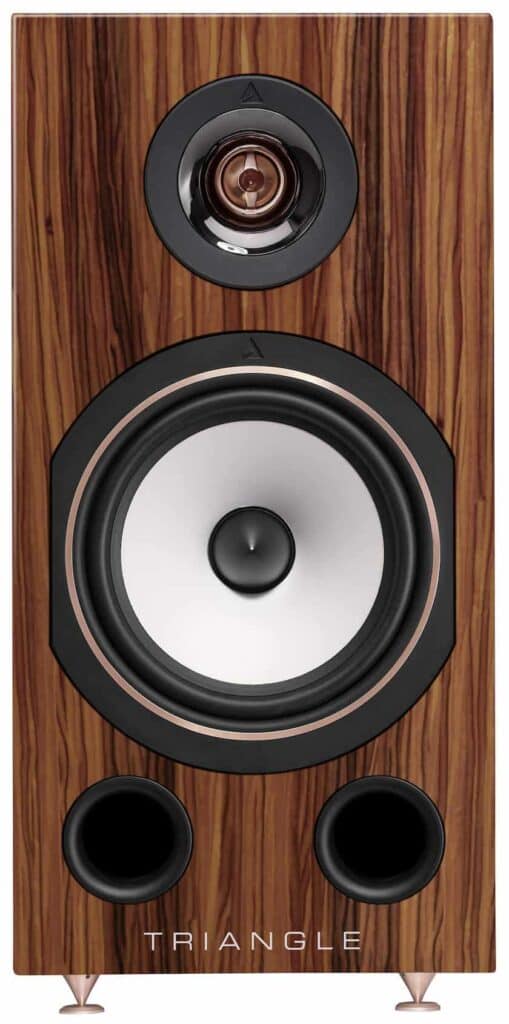
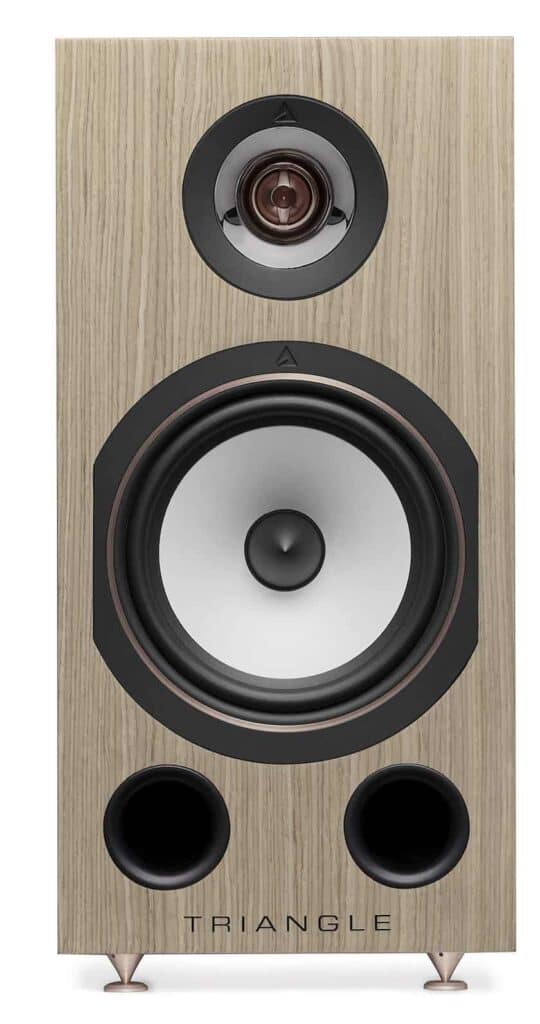

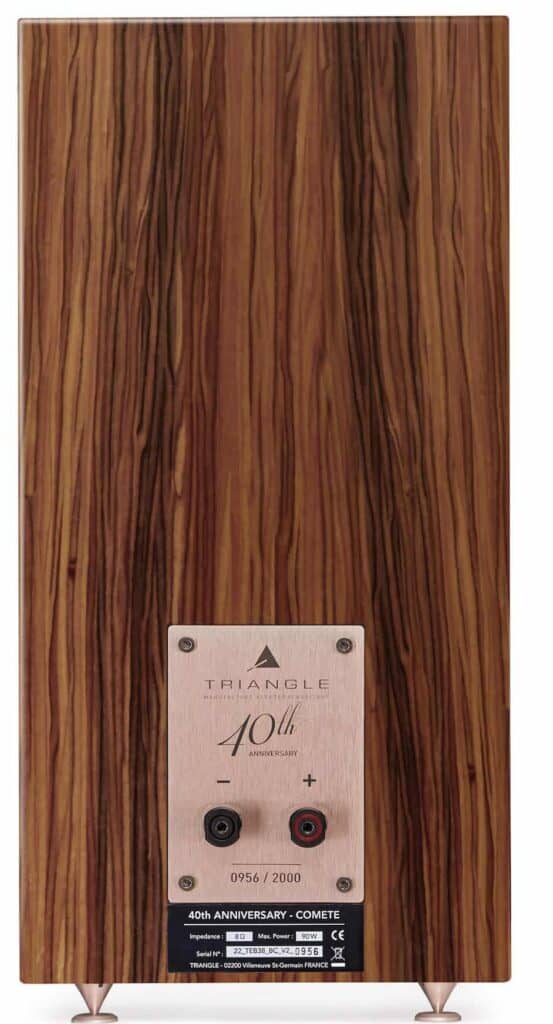
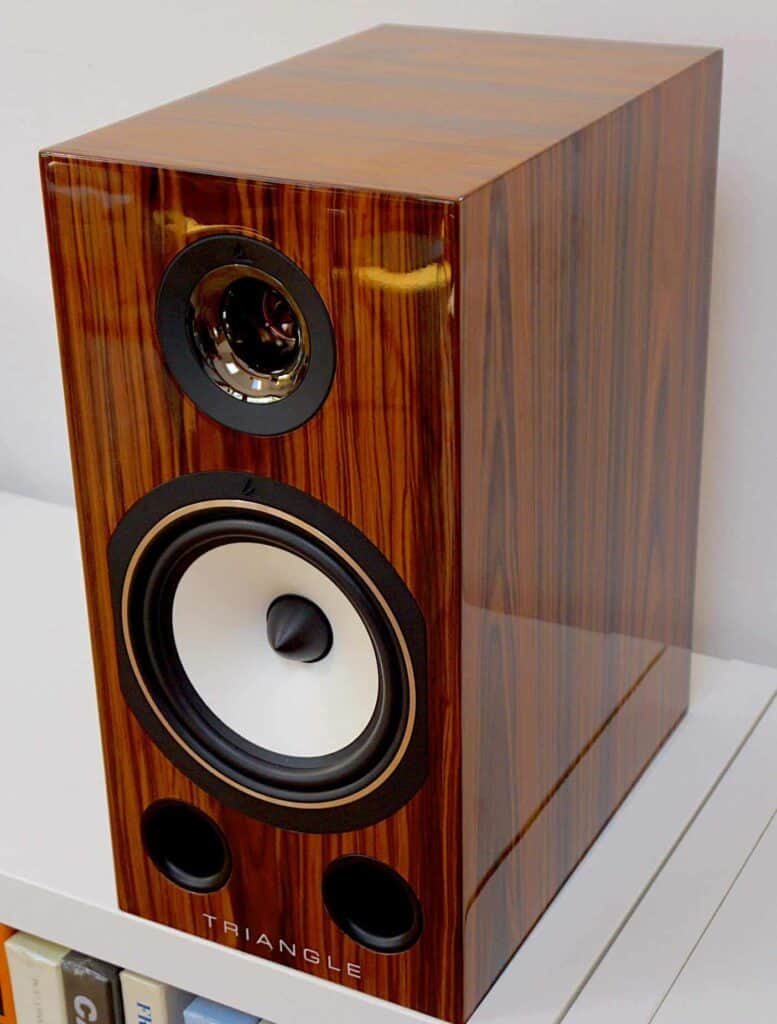
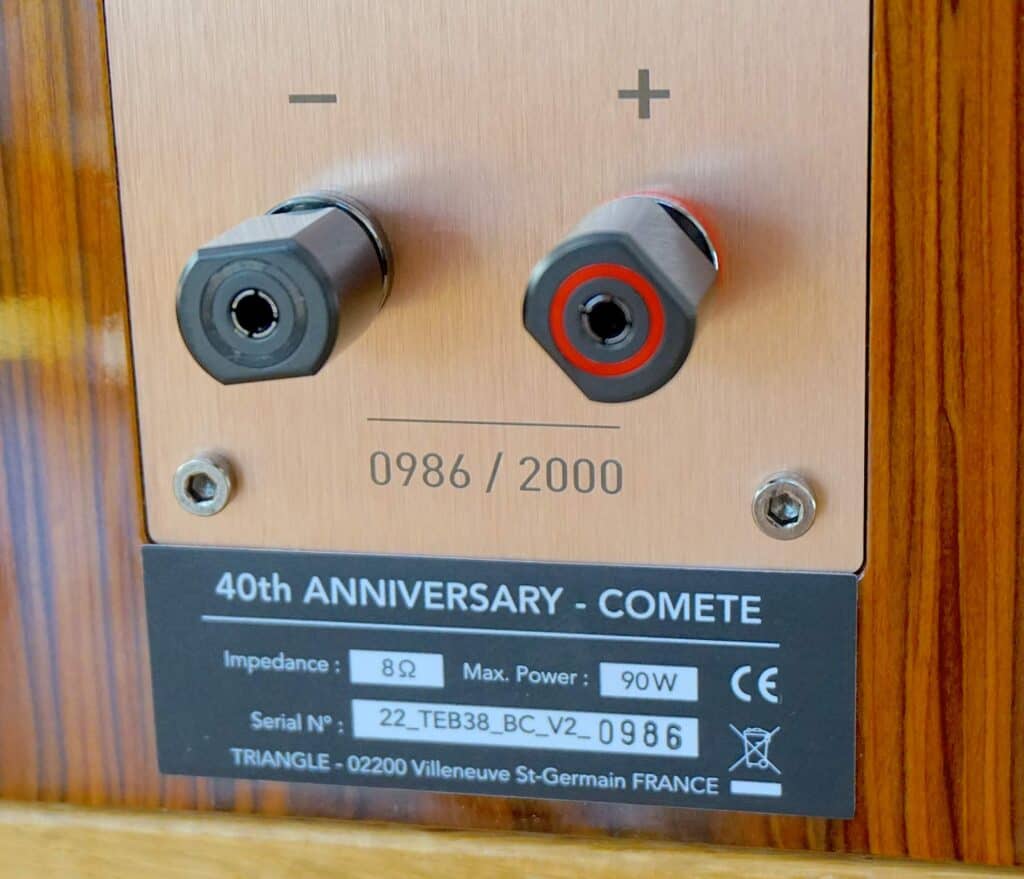
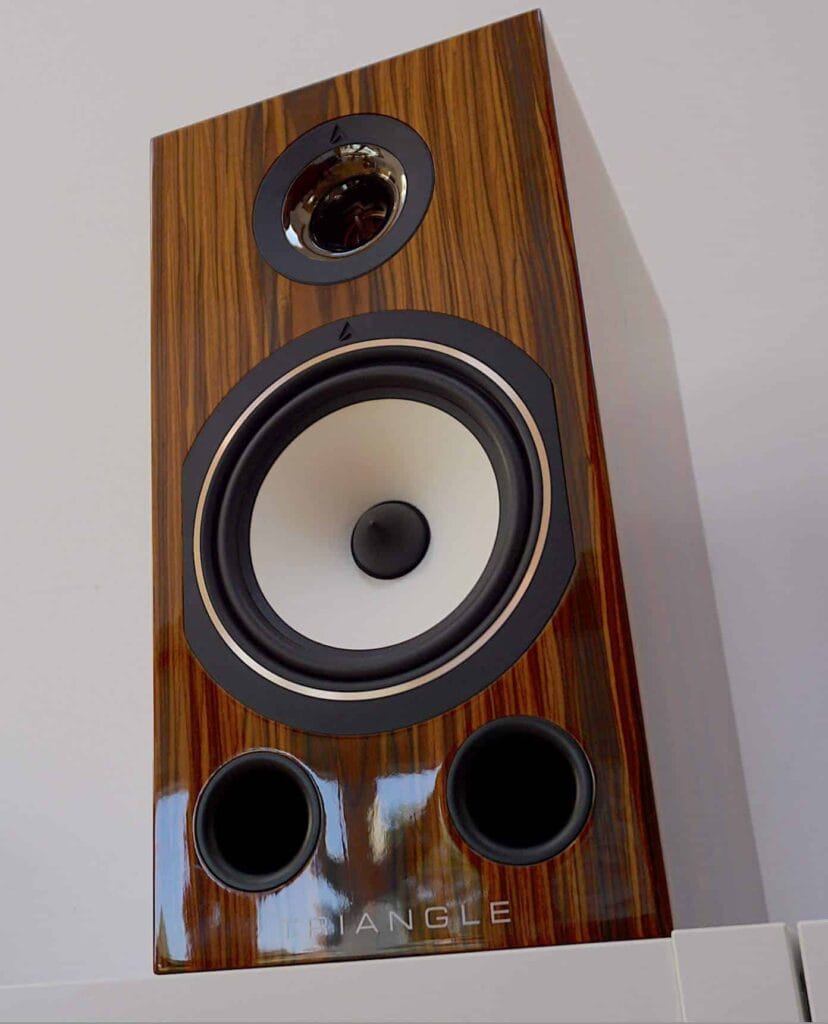
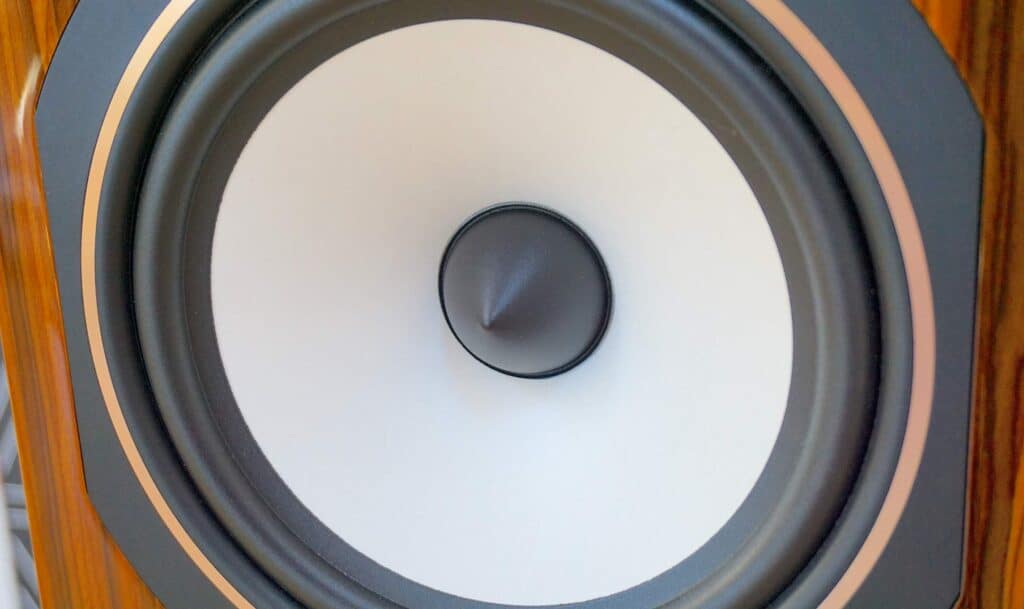
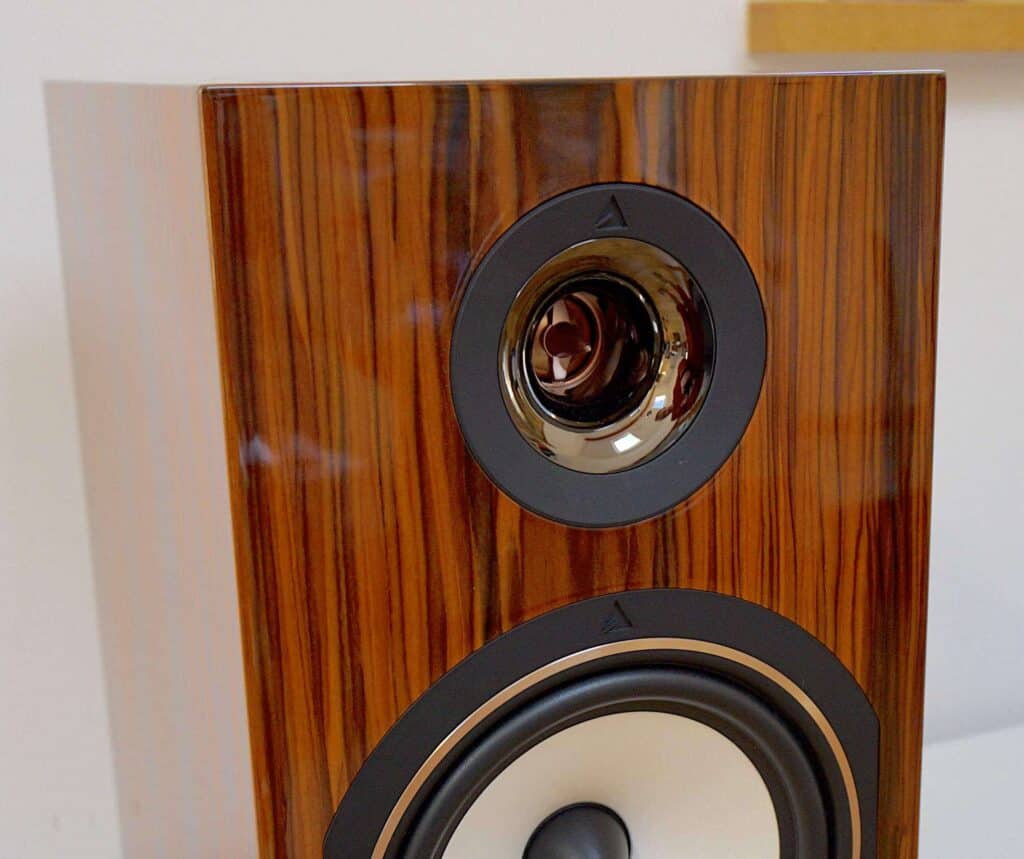
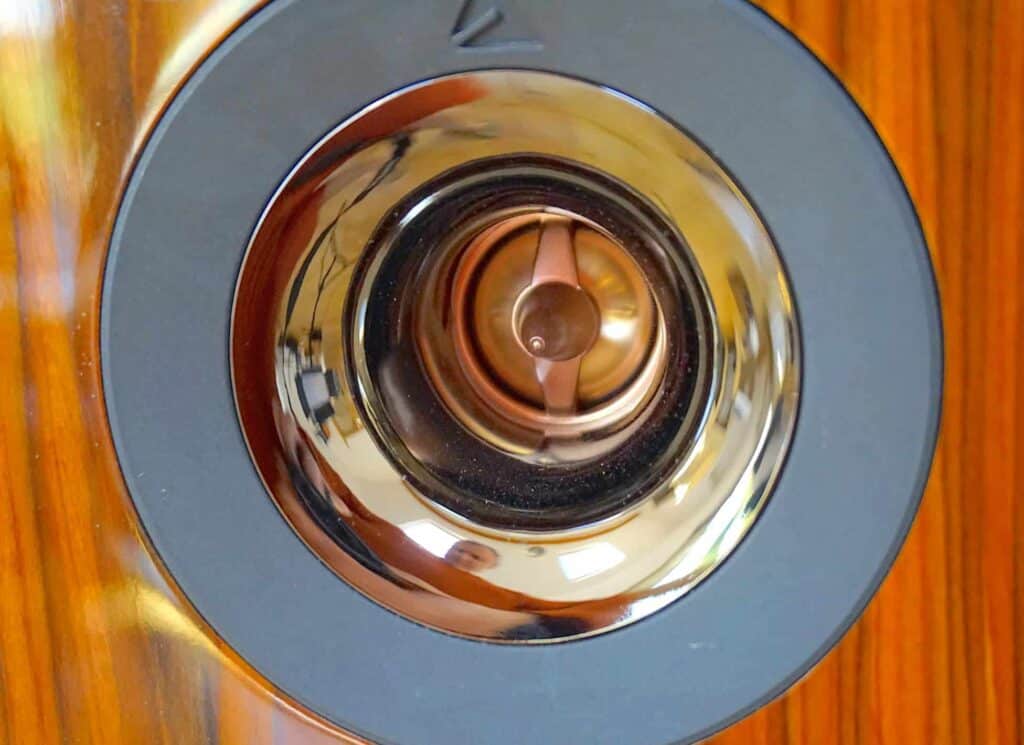
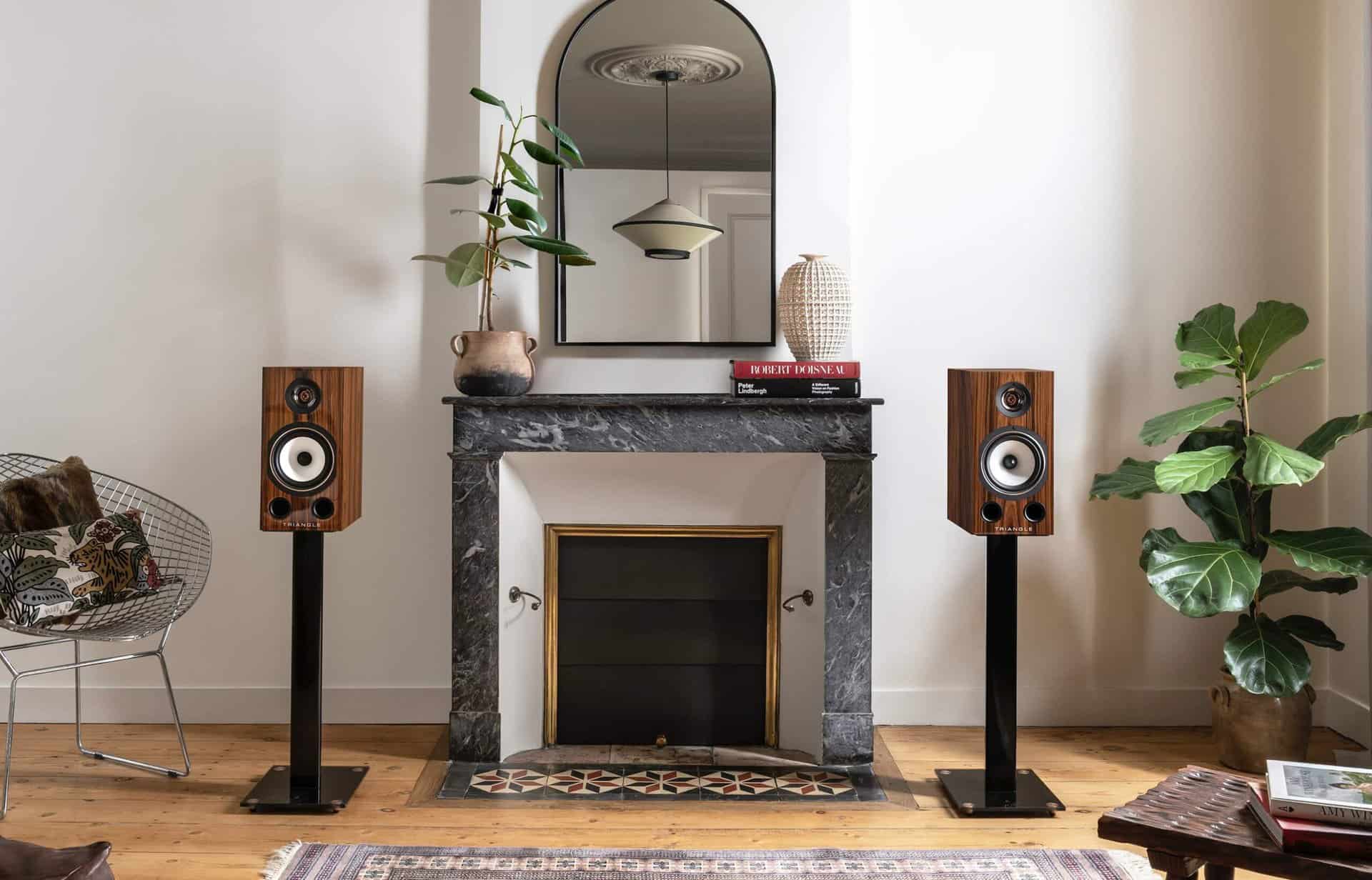

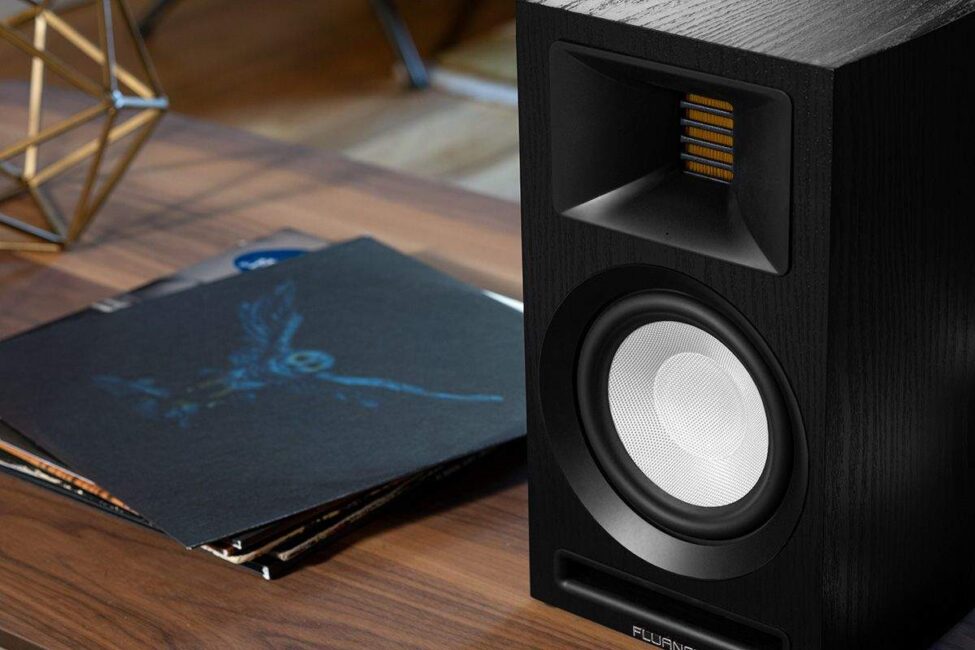

Hi Paul, visually these are impressive to look at and certainly have a bit more va-va-voom in appearance compared to the understated Spendor A1s of which I am an owner. You mentioned in the review that the Comete are “relatively easy to drive” with a sensitivity of 90dB. You made some key comparisons with the Spendor A1s but if this was an A/B test you didn’t mention the amplifier used in your review? The A1s have a sensitivity of 84dB so I just wondered if you did an A/B test as part of this review and if this was conducted using the same amplifier, and if so, which one?
Hi John, the Audiolab 6000A and my reference Aesthetix pre/Icon Audio monoblocks
Does the 40th anniversary edition have any difference from the Comete EZ aside for the finish, Paul?
I changed from the Triangle BR03 to Revel M16’s earlier this year. Sometimes I do miss that bit of character and greater scale of the Triangle’s, despite being a demonstrably less balanced speaker. When the urge to change strikes again I may well have a close look at these.